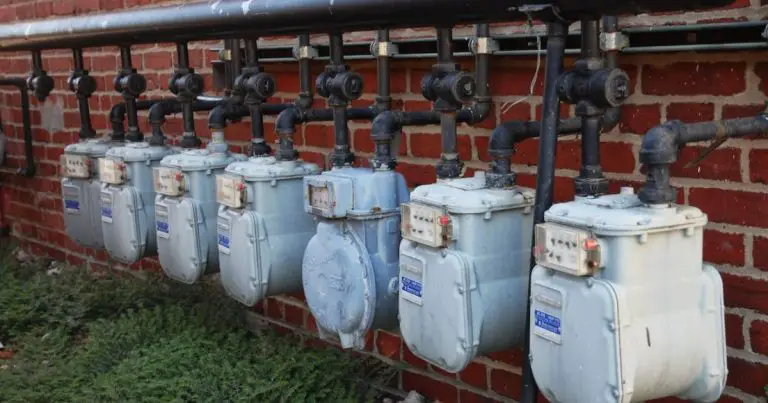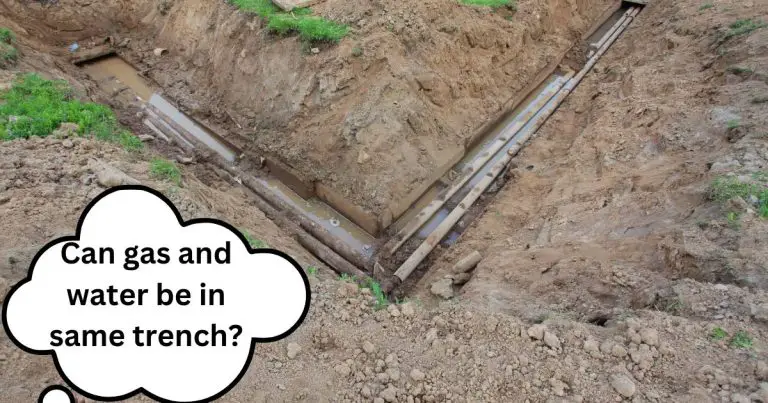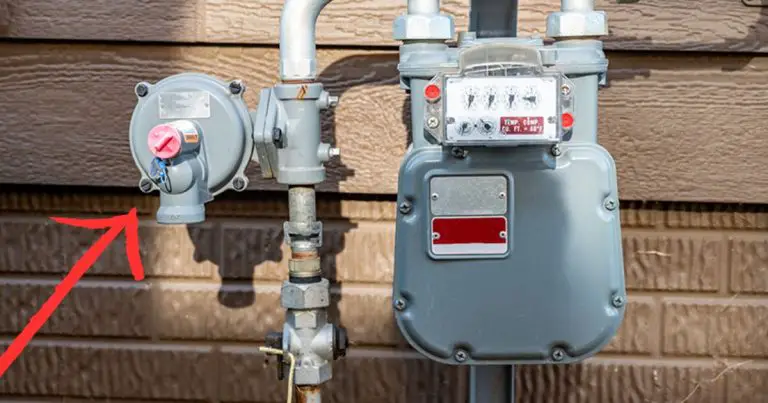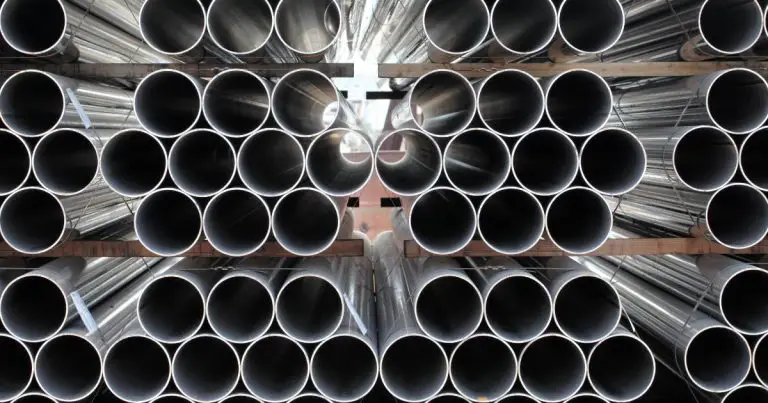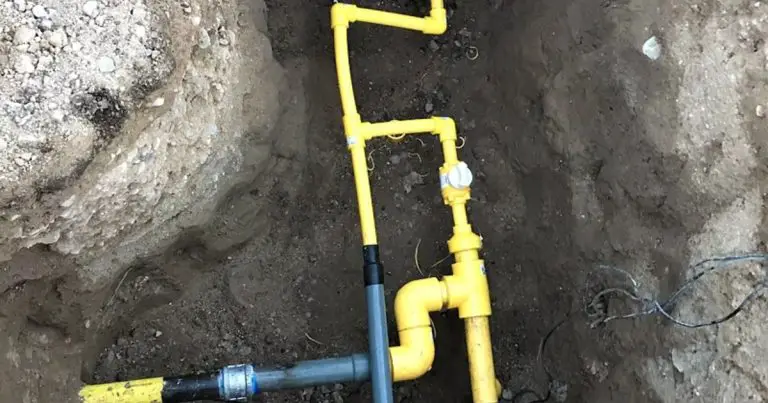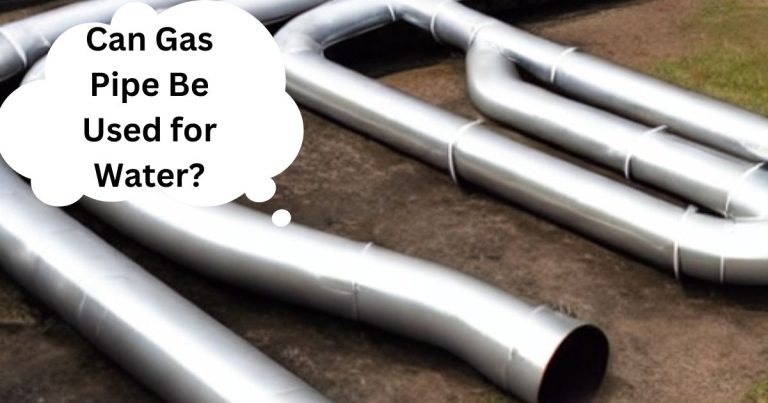How Much Pressure is in a Gas Pipe? (We Tried it Out!)
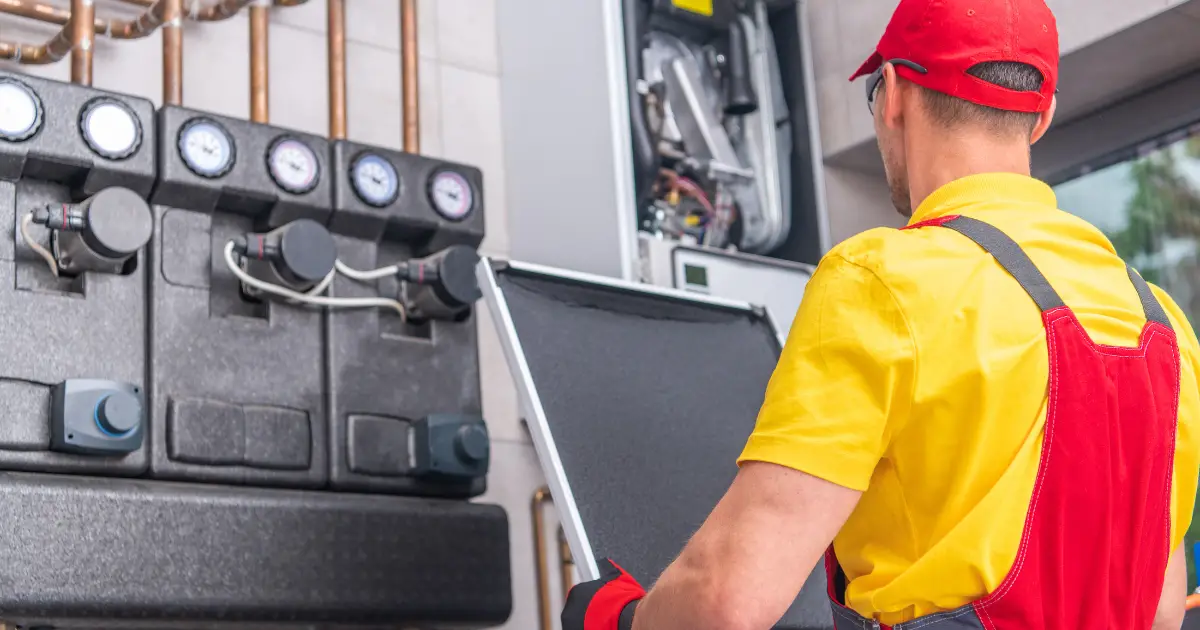
Gas pipe pressure is one of the most crucial elements affecting how quickly you can cook your meal, as well as what degree of heat – if any – will be released when cooking.
Understanding how much pressure is in your gas pipe is an essential component in ensuring an enjoyable cooking experience!
How Much Pressure is in a Gas Pipe?
The pressure in a gas pipe is determined by the type of gas, the size of the pipe, and the amount of gas flowing through it. Generally, the pressure in a gas pipe is measured in pounds per square inch (psi). For example, natural gas typically has a pressure of 1/4 psi to 60 psi, while propane has a pressure of up to 250 psi. The pressure in a gas pipe can also be affected by the temperature of the gas, the elevation of the pipe, and the length of the pipe.
What is the pressure of natural gas in a home?
The pressure of natural gas in a home is typically between 5 and 7 inches of water column (WC).
This is equivalent to 1/4 pounds per square inch (psi).
The pressure of natural gas in a home is regulated by the local gas utility company and is typically lower than the pressure of natural gas in a pipeline.
What is a gas pressure regulator?
A gas pressure regulator is an essential piece of equipment that is used to control and monitor the flow of gas.
It works to reduce the pressure of the gas from a higher pressure to a lower, desired pressure.
This is done by using a valve that is connected to a mechanical linkage and spring system.
The purpose of using this system is to reduce the pressure of the gas from a higher pressure to a lower, desired pressure.
This helps ensure the proper amount of gas is flowing through the system and allows for efficient operation.
The regulator is also responsible for monitoring and controlling the flow of gas, preventing it from becoming too high or too low.
Gas pressure regulators are used in many different industries, including construction, automotive, food processing, and medical industries.
They are designed to be compact and lightweight, while still providing maximum performance with minimal maintenance.
Gas pressure regulators are an important part of any system that requires the use of gas and can provide many benefits when used properly.
To regulate the pressure of a gas providing device, such as an appliance or pipe-based fixture, one typically employs a piece of apparatus known as a regulator.
Regulators can be employed for various purposes, ranging from letting off stray bursts of flame in place of using matches to regulating the pressure within heating systems and plumbing.
Ultimately, they facilitate managing gas safety by preventing any accidental ignition due to over-pressurization – which is particularly important when dealing with potentially flammable materials like natural gas!
What is the Pressure in a Gas Pipe and How is it Measured?
Powering up your house with natural gas may evoke a sense of security; however, you should be aware that the domestic utility provider is responsible for ensuring this resource is safe.
Prior to entering into a contract with a gas service provider, they will assess the condition of existing pipes in an area-examining them and assessing their leakage potential.
If necessary, they may even replace any malfunctions or leaks before proceeding with installation.
Unfortunately, pressure levels in a gas line fluctuate significantly from one second to another as it moves from source to recipient; therefore, measuring its exact magnitude at various junctures along its journey is quite challenging.
To determine the pressure in your home’s gas system, utility companies utilize a well-established measurement system that takes into consideration various factors such as length and diameter of the pipe as well as ambient temperature fluctuations.
When you power up your house with natural gas, the utility provider will assess the condition of your pipes.
If necessary, they may replace any leaks before proceeding with installation.
The pressure in your home’s gas system is determined by measuring the pressure at various junctures along the pipe’s journey.
Taking into consideration length and diameter of the pipe as well as ambient temperature fluctuations, it is a well-established measurement system.
How does pressure affect the flow of gas?
The pressure that exists within a gas pipe can have a profound effect on how fast it moves and the volume it distributes.
Generally speaking, there are three discernible classes of flow:
- 1) sub-atmospheric flow – a process wherein gases are transported within a liquid as opposed to being liquefied;
- 2) intermediate-to-low pressure;
- 3) high pressure – when pipes operating at above atmospheric pressures are utilized in order to mitigate any potential problems caused with upward leakage.
Pressure also affects the quality of gas.
Gases that are under high pressure tend to have a more stringent odor and may also cause ice buildup on cooling pipes.
On the other hand, gases that are under low pressure may seep out of a pipe more easily, posing potential safety hazards.
Ultimately, proper installation and use of regulators is crucial in order to maintain safe operating pressures as well as avoid any unwanted consequences.
What Are the Different Types of Gas Pipes and How Does Pressure Vary Between Them?
1: Steel
– Steel gas pipes are the most common type of gas pipe and have the highest pressure rating.
2: Copper
– Copper has a lower pressure rating than steel, but it is also corrosion-resistant and durable.
3: Polyethylene (PE)
– PE is lightweight and flexible, making it ideal for underground applications. It has a low pressure rating, so it is usually used in low-pressure systems.
4: PVC
– PVC is a lightweight, durable option that can be used in both high-pressure and low-pressure gas piping systems. It has good corrosion resistance and is often used in outdoor applications.
5: Polypropylene (PP)
– PP has a higher pressure rating than PVC and is more resistant to temperature changes and water infiltration. It is used in high-pressure gas piping systems.
What Are the Benefits of Installing a High-Pressure Gas Pipe?
Step 1: Increase the Efficiency of Gas Appliances
Step 2: Reduce Fire Hazards
Step 3: Lower Risk of Leaks
Step 4: Improve Performance of Appliances
Step 5: Reduce Energy Consumption and Costs
Step 6: Increase Life Expectancy of Equipment
Step 7: Improve Air Quality
High-pressure gas pipes can have a number of benefits that can improve the performance of your home’s appliances and equipment, reduce risk of leaks, and increase life expectancy.
Additionally, installing a high-pressure gas line is an efficient way to achieve cost savings on both construction as well as installation.
By providing an unobstructed pathway for H2O into any region of your abode, this configuration can reduce moisture levels within the walls and other structural components – resulting in a higher level of insulation along with less labor costs!
What Are the Risks of Having a Low-Pressure Gas Pipe?
1: Risk of fire due to inadequate fuel pressure in the gas line.
2: Risk of explosions due to the build-up of combustible gases.
3: Risk of carbon monoxide poisoning due to inadequate oxygen in the gas line.
4: Risk of soot and dirt accumulation due to poor air flow, resulting in clogged burners and inefficient heating.
5: Risk of pipe corrosion due to low pressure, leading to pipe leaks and possible flooding.
6: Risk of back drafting, when combustion gases are sucked back into your home instead of being vented outside, leading to carbon monoxide poisoning.
7: Risk of water damage due to pipe corrosion or leaks if the gas line is located near a water source.
What Are the Different Ways to Regulate Pressure in a Gas Pipe?
Pressure regulation in gas pipes is a critical part of the safe operation of any gas system.
It is essential to ensure that pressure levels remain within the safe range and are not allowed to exceed it.
There are several methods used to regulate pressure in a gas pipe, each with its own benefits and limitations.
The most common method is using a pressure regulator, which is a device that reduces the pressure of the gas that passes through it.
It can be adjusted to maintain the desired pressure level.
Another option is using variable choke valves, which are designed to restrict the flow of gas as it passes through them.
This is achieved by reducing the cross-sectional area of the pipe, thus increasing its resistance and reducing the flow.
A third option is to use pressure relief valves, which are typically installed at the end of a gas line and act as safety devices.
They open when the pressure exceeds a certain level, allowing excess gas to be released into the atmosphere.
All of these techniques are important for ensuring safe operation of a gas system and should be considered when installing or maintaining one.
- 1. Pressure-reducing valves
- 2. Pressure-regulating valves
- 3. Pressure-relief valves
- 4. Backpressure regulators
- 5. Flow control valves
- 6. Check valves
- 7. Low-pressure safety shutoff valves
- 8. Automatic recirculation valves
What are the Different Types of Pressure-Reducing Valves?
- 1. Check valves Check valves reduce the pressure in a gas line by allowing air to flow back and forth between two chambers, preventing the buildup of pressure.
- 2. Ball valves Ball valves are similar to check valves, but they have a larger ball that allows for more movement when the valve is opened or closed.
- 3. Weighted gates Weighted gates function in a similar way to check valves, but they use weights to regulate the pressure. This type of valve is often used in low-pressure applications where accuracy and repeatability are key.
- 4. Unbalanced screws Unbalanced screws reduce the pressure in a gas line by forcing down one side of the screw while allowing air to flow through the other side.
- 5. Cross-flow valves Cross-flow valves function in a similar way to unbalanced screws, but they have a slot that allows both gases to flow through the valve at once. This type of valve is often used in high-pressure applications where accuracy and
- repeatability are key.
- 6. Overrun valves Overrun valves reduce the pressure in a gas line by allowing air to flow past the valve into the line, preventing it from being over pressurized.
- 7. Quick release valves Quick release valves are similar to overrun valves, but they have a valve stem that retracts quickly so that the valve can be closed without obstruction.
- 8. Positive displacement pumps Positive displacement pumps use a piston to push air through the line, reducing the pressure in the line by displacing the gases.
Conclusion:
When it comes to gas pipe pressures, the amount of force required to rupture them is negligible.
In terms of gas pipe pressures, the magnitude of forces that must be exerted upon them in order to rupture them is negligible.
It is only necessary for a sufficiently large force to be applied; if that threshold is reached, then it will be possible to rupture the gas pipe instantly!
As you can see, there is no need for excessive force when opening a gas pipe – just make sure to use the appropriate tool!

